Wales is a picturesque part of Great Britain, known for its unspoiled nature and many charming characteristics. In Wales, you will not only meet warm-hearted people of a very special kind, but also find a truly idyllic world, the likes of which are very rare in this day and age.
In North Wales, you can experience breathtaking mountain landscapes, impressive coastlines, and ancient castles, while South Wales embodies the gentler side of the country, where idyllic hills and picturesque mountain villages dominate the landscape.
Wales is known beyond its borders for its picturesque castles and quaint ruins. Most of the castles scattered throughout the country date back to the early Middle Ages.
In Wales, the world is still as it should be. Away from the cities, tourists can enjoy landscapes that they may not find anywhere else. Wales conjures up images of old, romantic brick houses, natural stone walls entwined with wild blackberries, golden cornfields bathed in warm sunlight, narrow streets, and vast flocks of sheep grazing on green pastures.
A large part of Wales borders the Irish Sea and has many inviting beaches to offer. In summer, the beach invites you to spend long, relaxing days by the sea, where you can swim and soak up the sun in peace.
Cardiff
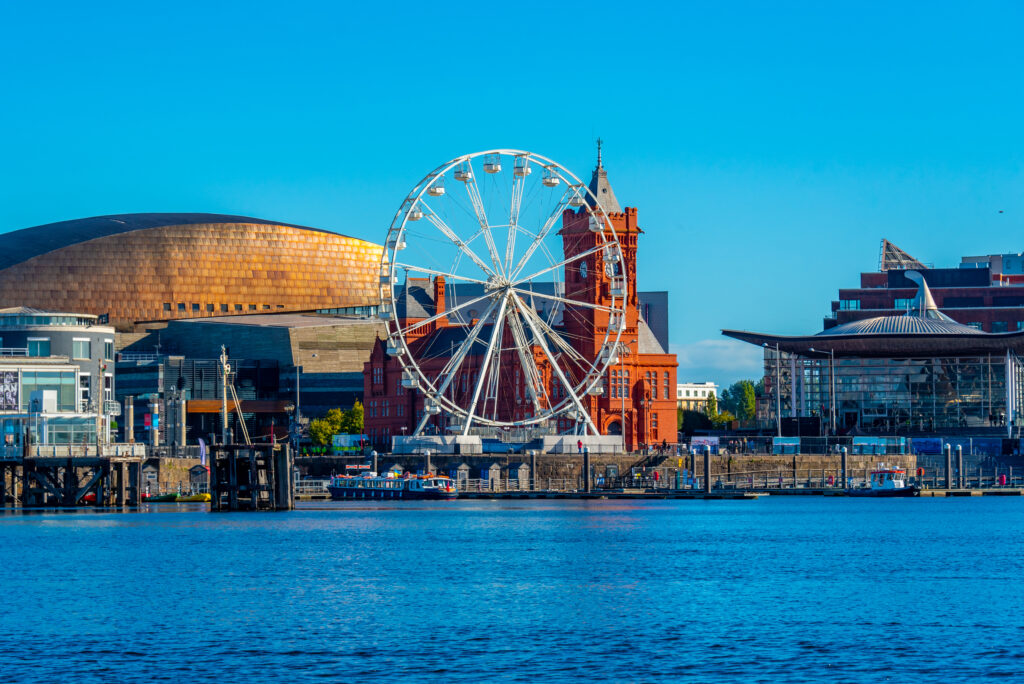
Cardiff is a European capital unlike any other: it is not particularly large—you can walk everywhere in about 15 minutes—nor is it particularly significant from a historical perspective, nor is it blessed with world-famous sights. And yet you simply have to like Cardiff. The Welsh accept the city for what it is: a city with a very good infrastructure, which is why it was designated the capital of Wales, Prifddinas Cymru in Welsh, in 1955.
The Welsh still stand by this extremely pragmatic decision today, even though the port, which was once the largest and most important coal port in the world, has since lost its significance.
Cardiff has now fallen back into the slumber of the pre-industrial era. Of course, this does not mean that there is nothing to see and experience in Cardiff, but the city has withdrawn from the limelight – just as Wales itself is still something of an insider tip.
It seems to reflect the nature of the Welsh people: a pleasant modesty coupled with warm and cordial hospitality that makes every stay in Cardiff a wonderful experience.
Conwy
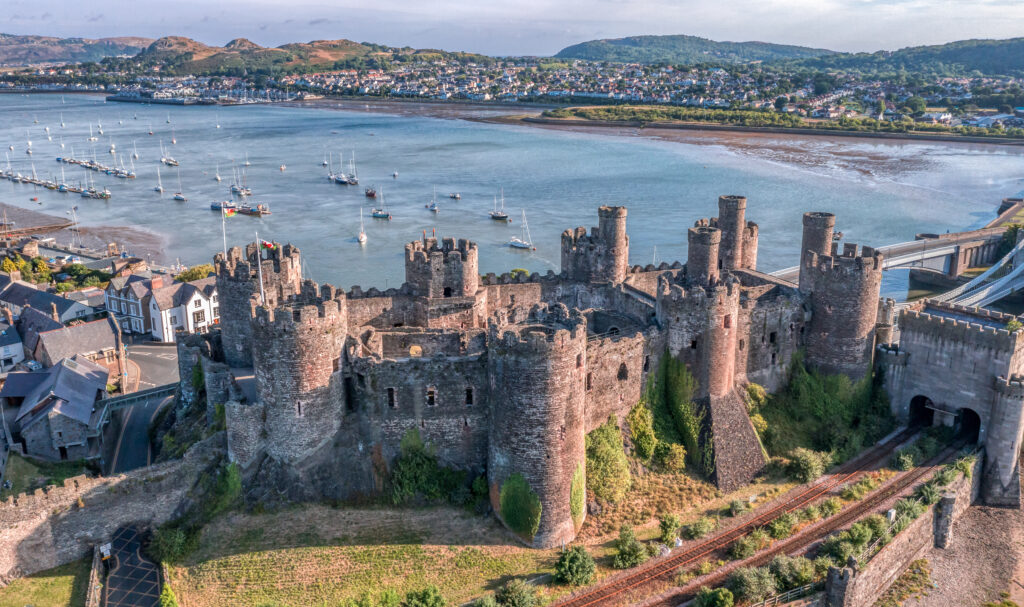
The market town of Conwy on the north coast of Wales captivates visitors with its ancient monuments, breathtaking landscapes, and historic sites.
Small but beautiful: even though Conwy City is not particularly large, with a population of around 14,000, it still offers a variety of attractions that make it a must-see destination on your next trip to Wales.
Conwy Castle was built by the English monarch Edward I between 1283 and 1289 as one of his most important North Welsh fortresses. Compared to other large Edwardian buildings, the castle’s design is relatively simple, which is due to the location of the building.
The massive structure exudes military power and seems to spring from the rock on which it was built. The eight huge round towers give Conwy Castle, a UNESCO World Heritage Site, an intimidating presence that has not been lost over time. The battlements offer spectacular views of the sea and the surrounding mountains.
Conwy’s second medieval gem is the city wall. The wall, which is over 400 meters long and guarded by no fewer than 22 towers, is one of the most beautiful in the world.
Not far from the castle is Quay House, the smallest house in Wales.
Snowdonia National Park
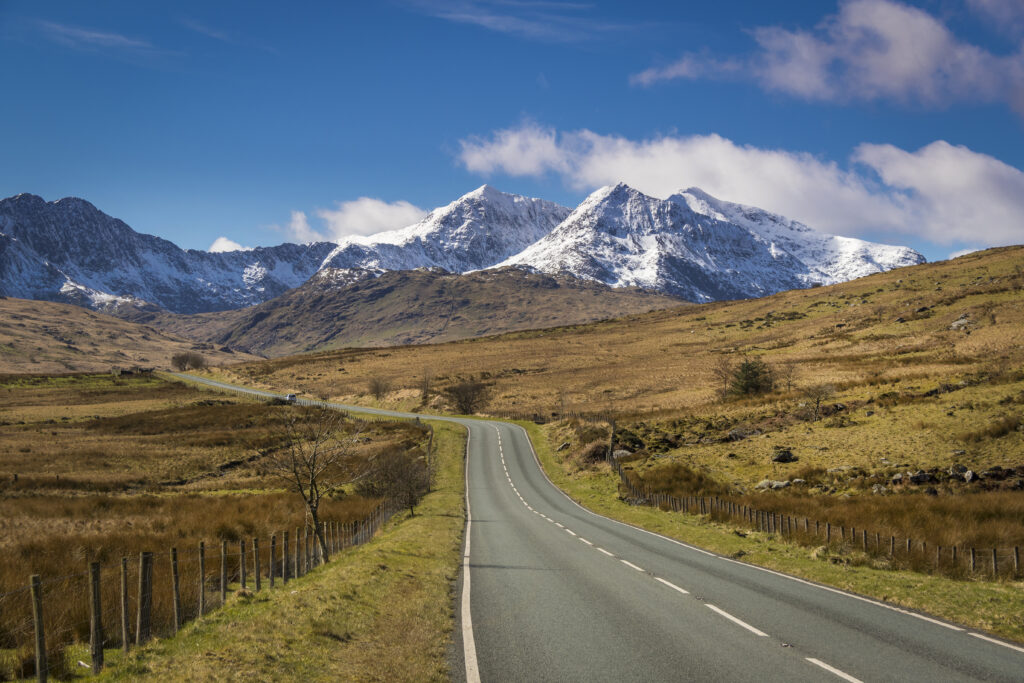
Snowdonia National Park in northwestern Wales covers an area of around 2,170 km² and offers breathtaking scenery of rugged mountains, wide valleys, and picturesque lakes. As one of the oldest national parks in Great Britain – founded in 1951 – Eryri National Park, as it is now officially called, attracts visitors from all over the world every year. Eryri is the Welsh name for the national park. It is derived from the word “eryr,” which means eagle in English.
Nature lovers, hikers, and adventurers gather here to experience the wild beauty of this unique region. The park is not only a paradise for outdoor enthusiasts, but also an important sanctuary for flora and fauna, stretching from the rolling hills to the towering peaks of Mount Snowdon, the highest mountain in Wales.
Breathtaking landscapes with sky-high mountain peaks and deep glacial valleys fascinate nature lovers from all over the world.
Mount Snowdon is the undisputed highlight of the park and the highest mountain in Wales at 1,085 meters. Depending on your personal fitness level, there are routes of varying difficulty that lead to the summit.
From the leisurely Llanberis Path to the challenging Crib Goch ridge, the various trails offer unique views and challenges. Those who prefer a more relaxed approach can comfortably reach the summit with the historic Snowdon Mountain Railway. The view from the top is simply spectacular – on a clear day, you can see all the way to Ireland.
Pistyll Rhaeadr

Wales is a land rich in water, and Pistyll Rhaeadr waterfall shows off its wild side. The Afon Disgynfa river plunges in three stages from a 73-meter-high Silurian rock face near the North Welsh village of Llanrhaeadr-ym-Mochnant. The highest of the three steps measures over 40 meters.
Although Pistyll Rhaeadr is not the highest of its kind in Wales, it is one of the so-called Seven Wonders of Wales. At the foot of the waterfall, there is a café with adjoining rooms in a traditional stone house. Below the cascades, the river continues to flow under the new name River Rhaeadr.
LLandudno
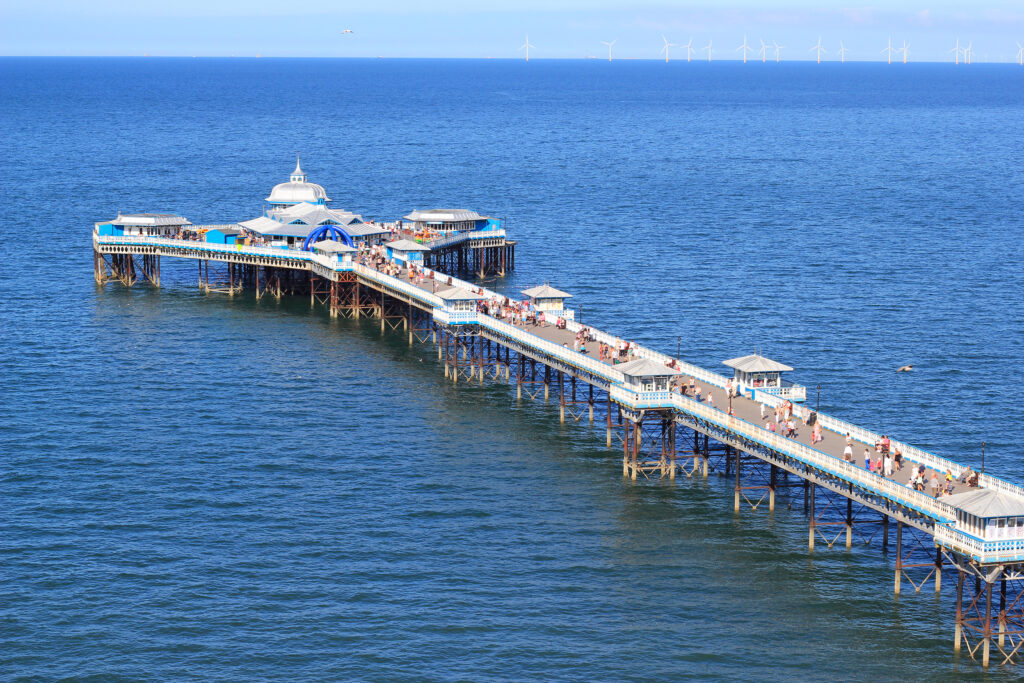
Once a year, the seaside resort of Llandudno in North Wales is thrown into a state of excitement: the beautiful Victorian villas along the promenade become more than just remnants of a bygone era, and the otherwise peaceful spa town comes to life during the Llandudno Victorian Extravaganza.
With its magnificent parade, splendid costumes, and elaborate decorations, the Extravaganza commemorates the heyday of Llandudno—then as now the largest seaside resort in Wales.
In the 19th century, during the reign of Queen Victoria – in the much-vaunted Victorian era – the town flourished in a splendor and beauty that we can hardly imagine today, despite all the remnants. Nowadays, people fly south to Spain and Italy for their vacations, but back then it was “en vogue” to spend the summer in Llandudno.
The seaside resort has always been very much oriented towards the English seaside resorts along the south coast. This is very clearly evident today in the Victorian-style townhouses that line the promenade like pearls, their white facades facing the sun and the sea. The pier, with its shops, small kiosks, and slot machines, is also inspired by the piers in Brighton, Bournemouth, and other seaside resorts.
Since 1902, a funicular railway has been running up the Great Orme, from where you can enjoy a wonderful view of Llandudno and its beaches. Since 1969, there has also been a cable car going up.
St Davids
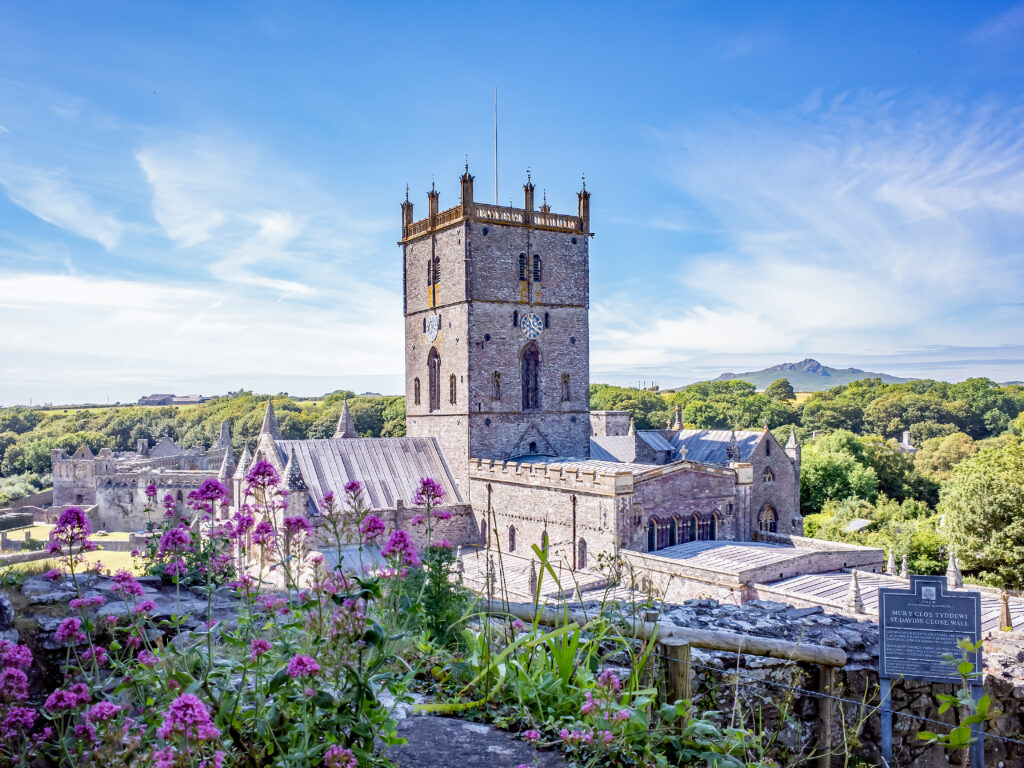
The origins of St David’s Cathedral date back to the 6th century. The parish of St David’s was founded by St David, who died in 589. Even then, St David was recognised as an intellectual and religious centre by King Alfred, but the parish did not achieve its almost cult status until the 11th century.
Thanks to the scholar Rhigyfarch, who wrote extensively about David’s holiness in his work Life of David, the parish, which housed a shrine containing David’s remains, gained a large following.
St David’s Cathedral is an incredibly impressive medieval building. After extensive restoration work, the church is in very good condition and has lost none of its Norman architectural style. The grassy areas around the cathedral are dotted with countless old graves with gravestones dating back to the 19th century.
The church is still used as such today and also houses a monastery tour, a library, and a large shop with a café, which also offers hot meals. The interior of the cathedral is almost more impressive than its exterior. Anyone visiting the cathedral should definitely take a look at the bishop’s palace, which is located right next to it.
Bodnant Gardens
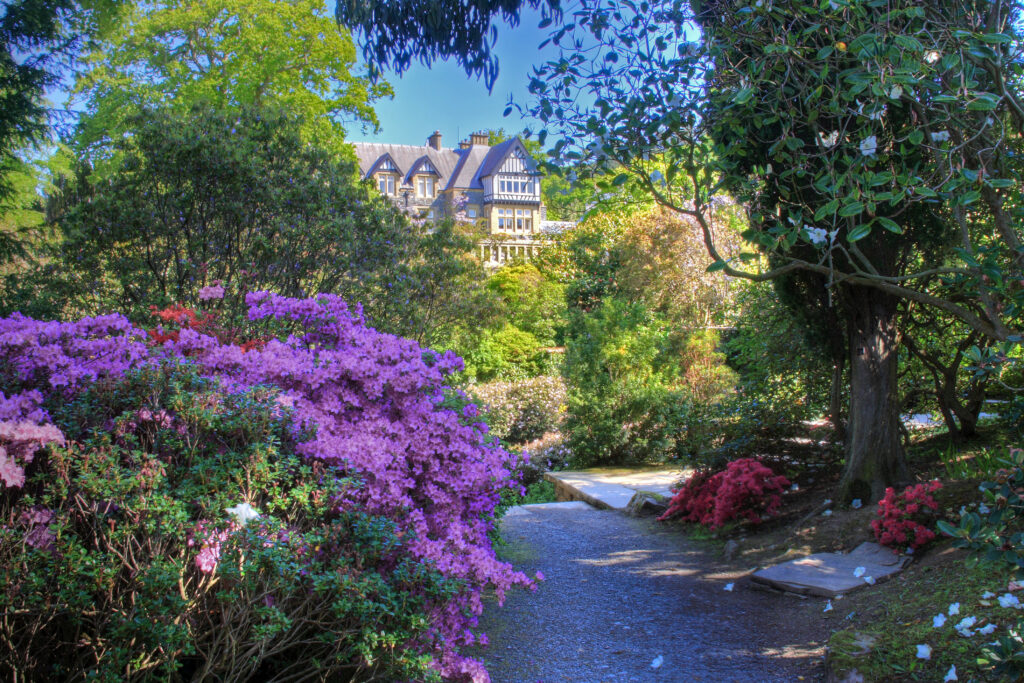
Tal-y-Cafn is a small settlement in County Conwy, through which the river of the same name flows. On one of the slopes of the Carneddau Mountains lies the 32-hectare Bodnant Garden, which has been run by its owners for five generations. Its hidden corners, extensive lawns, terraces, and copses, as well as its view of the picturesque Conwy Valley, make it a popular destination for day trips.
Bodnant Garden was originally planted with plants from expeditions around the globe: cedars from Africa and the Middle East, as well as numerous rhododendrons and camellias. The first magnolia in Great Britain ever bloomed here, imported from China in the 19th century.
Even today, rare exotic plants such as the blue poppy from the Himalayas and the South American firethorn can be admired. Bodnant offers a special charm in every season: from the first daffodils in spring to fragrant roses in summer, colorful foliage in fall, and an enchanted winter landscape with snowdrops.
In the two tea rooms, you can enjoy homemade cakes or locally produced wine or beer. Picnics are expressly permitted by the operators. Bodnant Garden belongs to the National Trust.
Aberystwyth

Aberystwyth means “mouth of the River Ystwyth.” However, the small town is affectionately known locally as “Aber.” It is located in the middle of the wild west coast of Ceredigion and is an excellent destination for a short break.
Aberystwyth is one of the largest towns in Mid Wales and is home to Aberystwyth University and the Aberystwyth Arts Centre.
Aberystwyth town center stretches across a variety of interesting streets—the street names and architecture reflect the history and growth of the town since the Middle Ages. You can expect to hear many people speaking Welsh in everyday life. Much of the town center is easily accessible from the train station and the parking lots at the shopping centers.
Aberystwyth has a lot of independent shops, so if you’re looking for souvenirs, it’s best to bring an empty suitcase.
When visiting Aberystwyth, it’s almost impossible not to pass by the long Victorian promenade – whether you’re out for a walk, a jog, or just to pause for a moment and enjoy the beautiful view of the sea. You can also enjoy these views from the pier, the oldest in Wales (built in 1864). However, the view from the 130-meter-high Constitution Hill at the northern end of the beach promenade is unbeatable.
Wrexham

Wrexham is an industrial town in the northeast of Wales, near the border with the English county of Cheshire. Wrexham is also the administrative center of the County Borough of Wrexham. The town itself has a population of around 43,000, making it the largest town in North Wales.
The area around Wrexham was first settled in prehistoric times. Remains of settlements from the time of ancient Rome were found during the construction of the Plas Coch Retail Park outside the town center.
Wrexham is not mentioned in the Domesday Book; the first documented reference to it dates back to 1161, when there was a Norman motte in Wristlesham.
During the English Civil War, Wrexham sided with the Cavaliers (Royalists). Most of the Welsh nobility supported the king, although the landowner Sir Thomas Myddelton, lord of Chirk Castle, supported Parliament. During this period, Wrexham became the most important town in the area and achieved considerable prosperity through its markets.
In earlier times, Wrexham was one of the most industrialized areas in Wales. One of the most important industries was brewing, with numerous large breweries in the town and several smaller breweries in the town’s inns and pubs. Some of the famous old breweries were Albion, Cambrian, Eagle, Island Green, Soames, and Willow.
The best known, however, was the Wrexham Lager Brewery, which was built on Central Road between 1881 and 1882. This brewery was the first in the United Kingdom to produce lager. Today, all breweries that were commercially operated have been shut down.
Chirk Castle
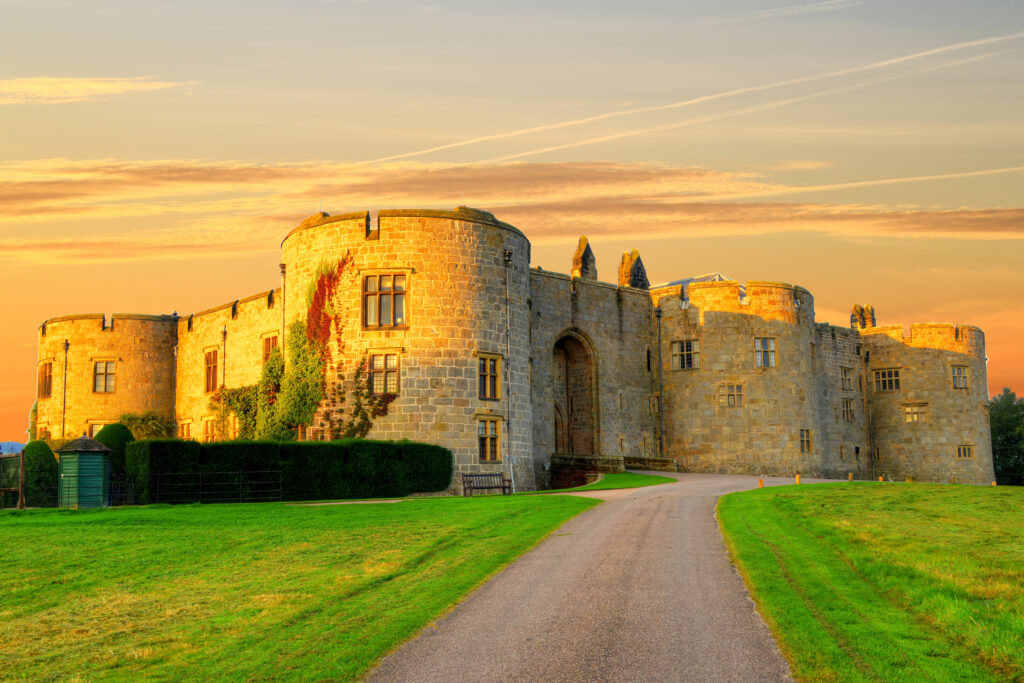
Originally built as a fortress to protect against the Welsh, the former castle was converted into an imposing manor house. A castle called Chirk Castle is first mentioned around 1157, built by King Henry II of England.
It is not until over 100 years later, around 1282, after the conquest of Wales, that Chirk Castle is mentioned again. The southern territories of the Kingdom of Powys Fadog were renamed Chirkland, and King Edward I granted the barony to his follower Roger Mortimer, who was henceforth known as Roger Mortimer of Chirk.
Mortimer became the first Earl of March and one of the Marcher Lords, whose task was to defend the borderlands between Wales and England. Around 1295, Mortimer begins construction of a castle and becomes the center of his rule as Marcher Lord of Chirkland.
The royal architect James of St. George, who also designed Conwy Castle and Caernarfon Castle, among others, is commissioned to build the medieval castle.
Over the decades and centuries, the castle changed hands several times and underwent a number of alterations. Around 1595, the castle was purchased for £5,000, which is equivalent to approximately £11,000,000 today, by one of the founders of the East India Company, Sir Thomas Myddelton.
Under Myddelton, the medieval castle was slowly converted into a mansion. In 1978, Chirk Castle was finally handed over to National Trust and is now open to the public.
Pontkysylte
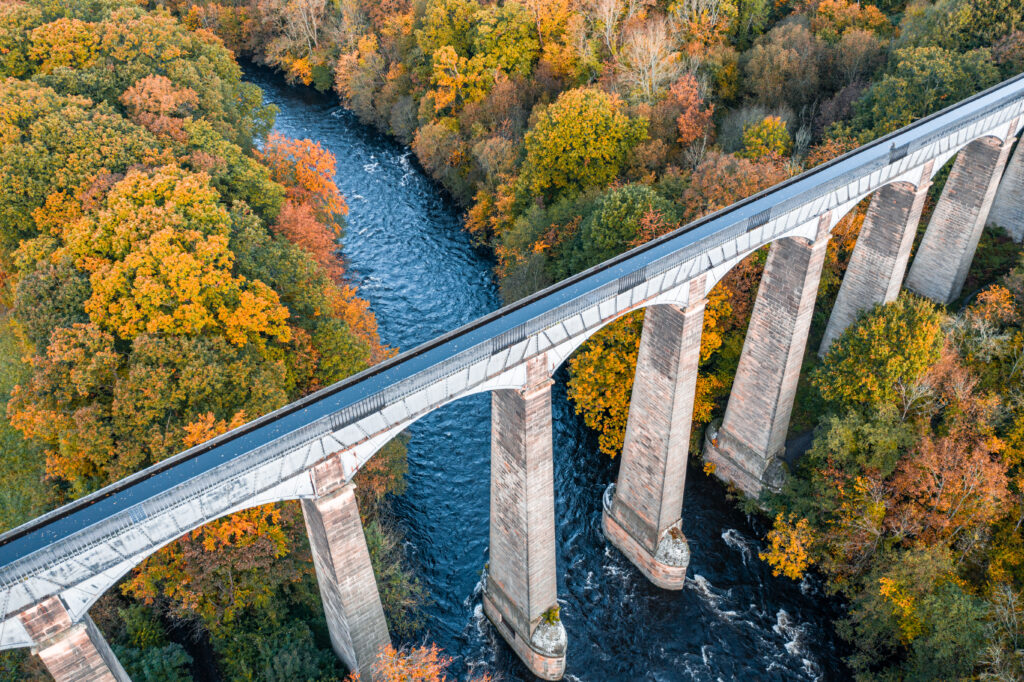
The Pontcysyllte Aqueduct is part of the former Ellesmere Canal, which is now known as the Llangollen Canal. The aqueduct spans the Dee riverbed at a height of 38 meters and is 308 meters long. Upon completion of the construction work, the project was supervised by Thomas Telford. Previously, especially in the initial phase, William Jessop (1745-1815) was in charge of construction management.
Today, the canal transports around 27 million liters of drinking water every day, which flows from Horseshoe Falls, where the Dee cascades a short distance upstream, to the towns of Cheshire. The aqueduct attracts crowds of visitors. The Canal and River Trust maintains a small visitor center at Trevor Basin on the north side of the bridge structure.
Tenby
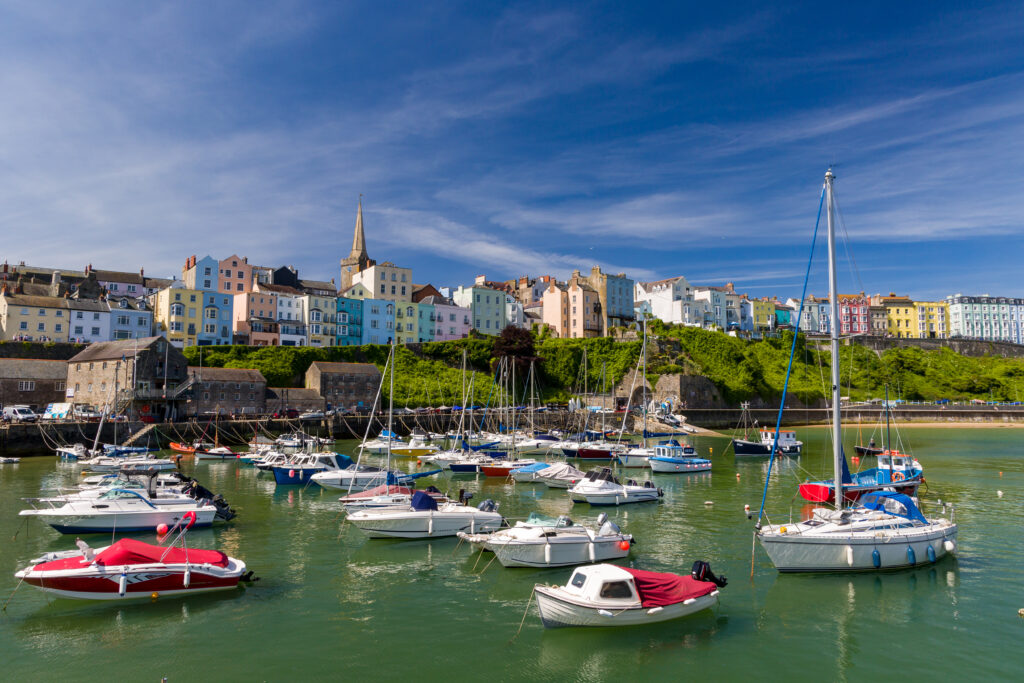
Tenby is one of Britain’s prettiest seaside resorts, with its harbor full of sailing boats and the narrow, winding streets of the medieval town; its originality and charm rival places such as Mevagissey and Polperro in Cornwall. Tenby has three great beaches, each with its own character and all facing in different directions, so you can find shelter from the wind.
The Tudor Merchant’s House, owned by the National Trust, is a fascinating three-story house that has been restored to look as it did in the late 15th century. Only a small tower remains of Tenby Castle, which was built in the 12th century to protect the natural harbor, but the 13th-century town walls are almost completely preserved.
Take a 20-minute boat trip to Caldey Island. This holy island is owned and run by a community of Cistercian monks. It is open to the public from Easter to the end of October, closed on Sundays. Priory Beach is a pristine sandy beach and perfect for families.
Gower Peninsula
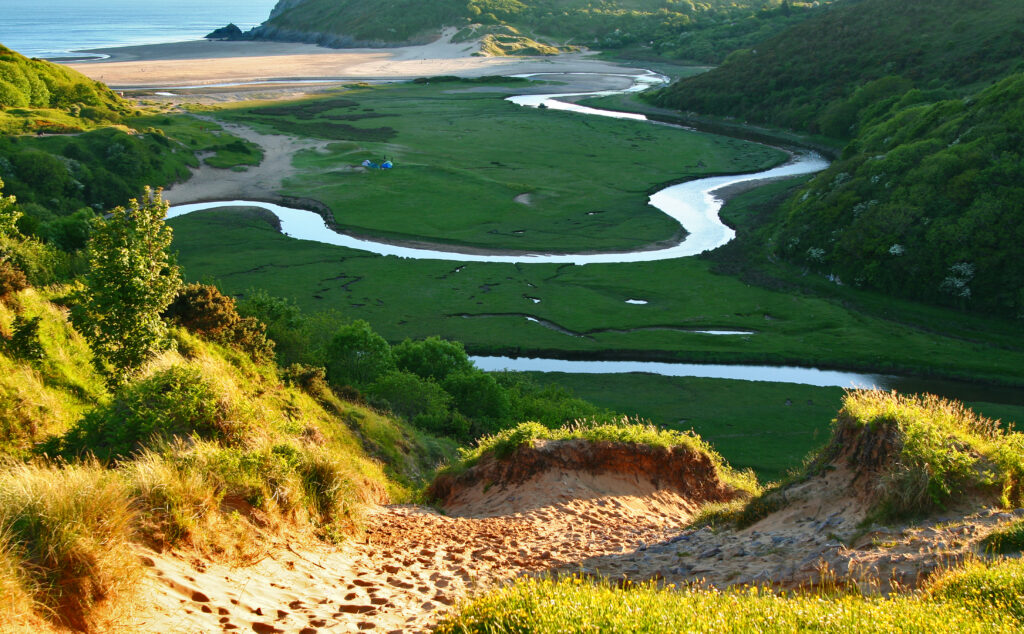
The Gower Peninsula (Welsh: Gŵyr) is one of Wales’ biggest tourist attractions and the second most famous region after Snowdonia.
It was the first area in the British Isles to be awarded the title “Area of Outstanding Natural Beauty” in 1956.
The peninsula, which covers over 100 km², is famous for its magnificent coastline. It is very popular with hikers, other nature lovers, and surfers. The interior consists mainly of farmland and public open spaces. The peninsula belongs to the municipality of Swansea, which borders it directly to the east.
There are only small villages on the peninsula itself. The south coast consists of a multitude of narrow, rocky, or sandy bays such as Langland, Caswell, and Three Cliffs.
The peninsula is bordered by Swansea to the east and the Loughor estuary to the north. The northwestern region of the coast is known for its mussel beds at Penclawdd. Gower is a preferred place of residence for retirees and wealthy individuals, as well as a popular vacation destination.
Economically, the region is dominated by agriculture, but tourism is playing an increasingly important role in the lives of the inhabitants. Nevertheless, most residents work in nearby Swansea.
Brecon Beacons National Park
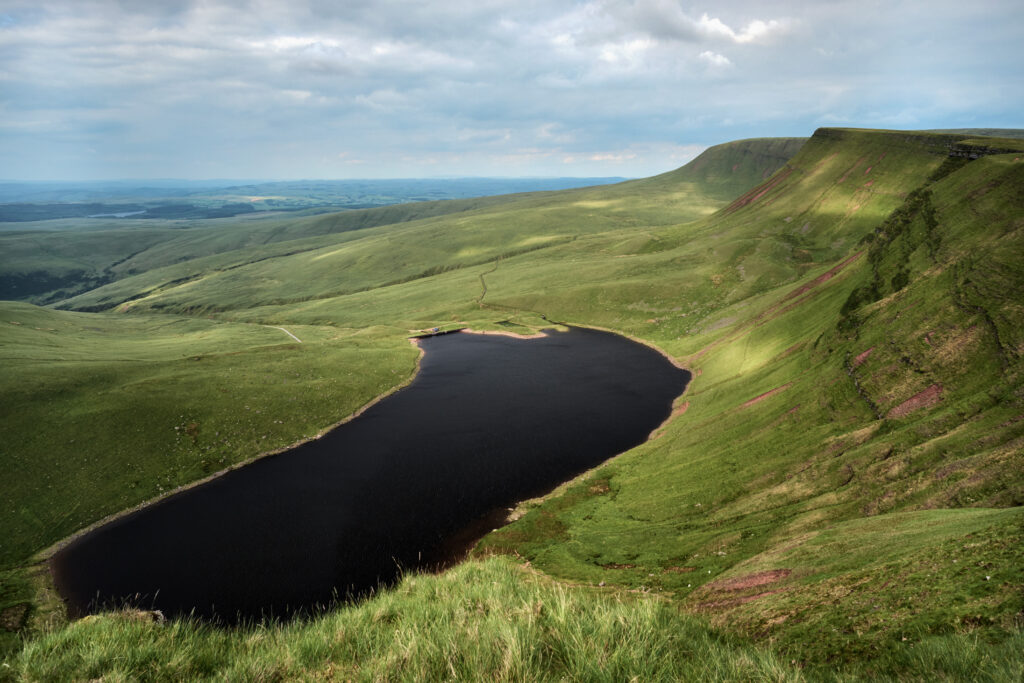
The Brecon Beacons National Park is a region of extraordinary, wild, romantic beauty, untamed, ancient, and filled with whispering voices. It is one of the few places in South Wales where you can get a sense of what this land once looked like.
When the sun breaks through the clouds and casts dancing shadows across the Brecon Beacons National Park, you feel as if the past is coming to life. The murmur of the stream is then full of history.
The Welsh – like all Celtic peoples – belonged to a nature religion, which means they saw nature as a living, animated being in which higher powers express themselves. This belief was deeply rooted in this region, and so the stories of this people are still at home here.
Some of them have even survived to this day. In Brecon Beacons National Park, for example, there is a legend of a great love, the story of Gwladus and Einon.
The legend of this love is one of many stories that are at home in Brecon Beacons National Park. They lend this landscape a very special magic and remind hikers of the many generations who walked through these mountains before them, who lived here and wrested their share of happiness from fate in the untamed wilderness.
They have all left their mark—be it in the burial mounds, stone circles, hill forts, or castles that characterize the landscape of Brecon Beacons National Park. Some of them, like Gwladus and Einon, remain unforgotten in the legends of the region.
Anglesey
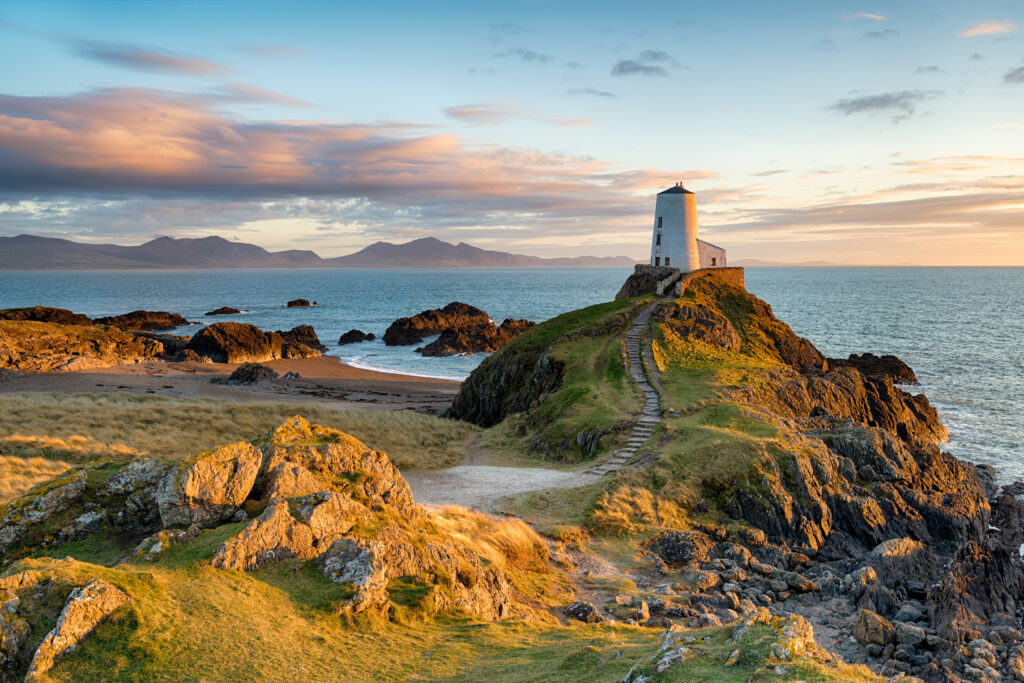
Ynys Môn, Mona, Isle of the Druids – the Welsh island of Anglesey has many names and each one sounds more mystical than the last. Hardly any other place in North Wales is as surrounded by myths and legends as the island of Anglesey, which is separated from the Welsh mainland by the Menai Straight.
One thinks of Avalon when one hears of Anglesey, the legendary otherworldly island of the Celts, the paradisiacal island of apples.
And Anglesey is also richly blessed with the fruits of nature and for centuries was regarded as the granary of Wales, earning it the name “mam cymru”, Mother of Wales. For centuries, it served as a retreat for the Celtic druids. Here they had their sanctuaries, their groves and their center of power.
Politically, Anglesey was therefore of great importance, as the druids formed the center of the Celtic world, guided the destinies of the people and were in contact with the gods.
It was not until around 61 AD that the Druid sanctuary on Anglesey was destroyed by the invading Romans under Gaius Suetonius Paulinius. The occupation of the island of Mona was of great importance to the Romans, as it had become the center of Celtic resistance in the west.
Here the old faith was preserved and here the Celts decided how to confront the occupiers. And it was here that they ultimately lost their independence: in the 13th century, Anglesey became part of the English kingdom.
Today, the island lies quiet and peaceful and at first glance doesn’t seem to have much to offer. In contrast to the dramatic landscape of Snowdonia (from Beaumaris you have a wonderful view of the mountain peaks on the opposite side and the small university town of Bangor), Anglesey seems almost unspectacular. But the island is a true vacation paradise if you appreciate its very special charm.
Pembrokshire Coast National Park
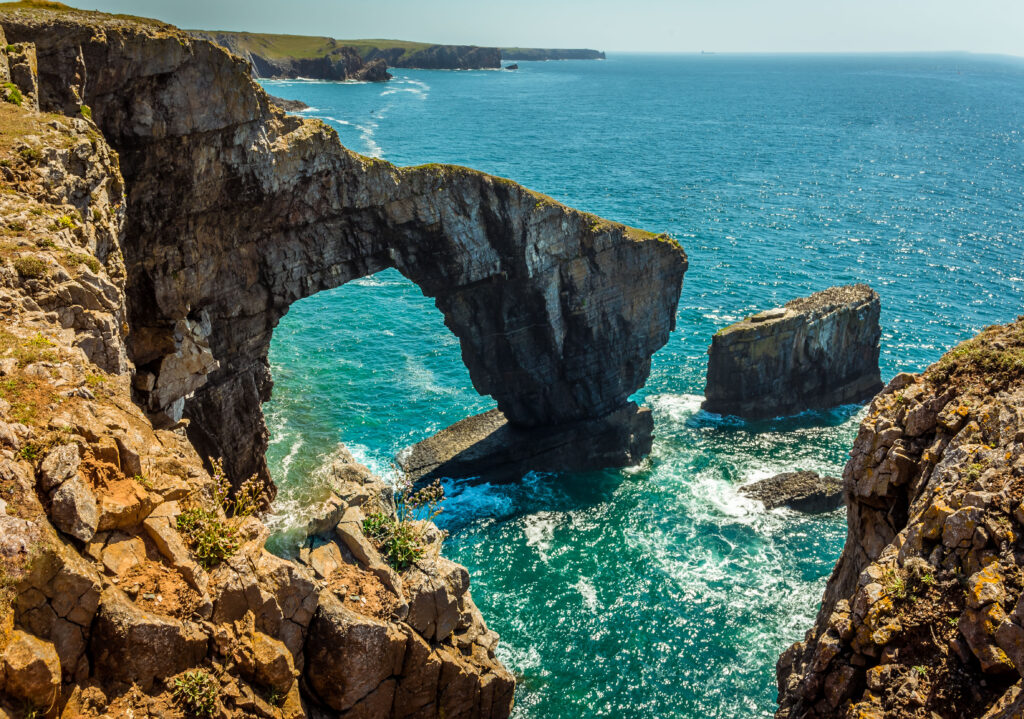
This wonderful national park on the coast of Wales is surrounded by an ecologically unique landscape. Pembrokeshire Coast Park is the only national park in the UK that is predominantly characterized by spectacular coastline.
The Pembrokeshire Coast Path has been voted one of the best walking trails in the world. It passes 80 beaches, most of which are award-winning. It offers year-round opportunities to discover the flora and fauna as the seasons change.
The national park is one of only three marine nature reserves in the UK. The cliffs on Skomer Island are famous for their colorful puffins and gannet and black-billed shearwater colonies. Pirates and smugglers once made the waters around Pembrokeshire unsafe. Thousands of shipwrecks lie on the seabed off the coast.
One of the most feared and famous pirates who once sailed the seas was Bartholomew “Black Bart” Roberts. He was born in Little Newcastle, a few kilometers from the coast. The park has a good public transport network. The buses connect the beaches, villages and towns along the coast
LLechwedd
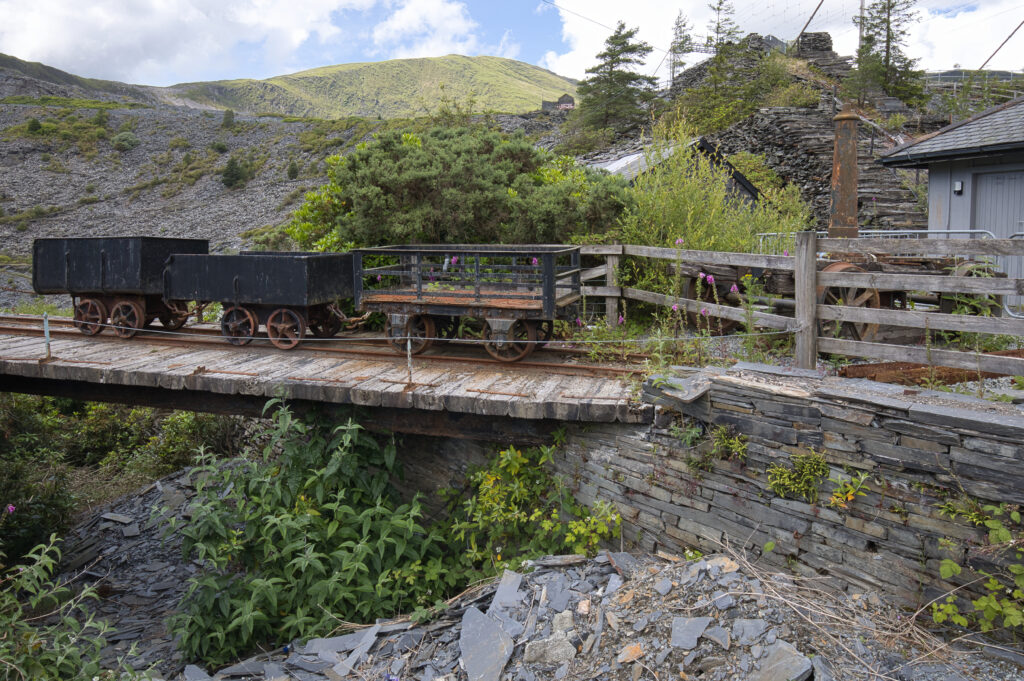
The landscape around Blaenau Ffestioniog is dominated by the former slate mining industry and is characterized by the bare rock faces of the quarries and huge scree slopes. Slate from Blaenau covered roofs all over the world in the 19th and early 20th centuries.
Since 1972, visitors have had the opportunity to explore the most impressive remnants of this once dominant industry in the slate caves of Llechwedd. These caves are actually mines, although the locals, who speak Welsh, use the English term “quarries.”
There are two underground tours to choose from. One takes you on the reactivated mine railway (gauge 0.92 m) over a steeply inclined slope into the former working tunnels, while the other takes you through a tunnel built in 1846 in a second train, in this case pulled by a battery-powered electric locomotive. A light and sound show brings the underground mining facilities, some of which reach a height of 62 meters, back to life.
Above ground, visitors can look forward to demonstrations of slate splitting and the small, largely preserved village of Pentre Llechwedd. Among other things, there is a corner shop, a smithy, and a Crimean house, probably built in 1854 and named after the Crimean War in the same year.
The site is part of the UNESCO World Heritage Site Slate Landscape of North West Wales.
Tintern Abbey
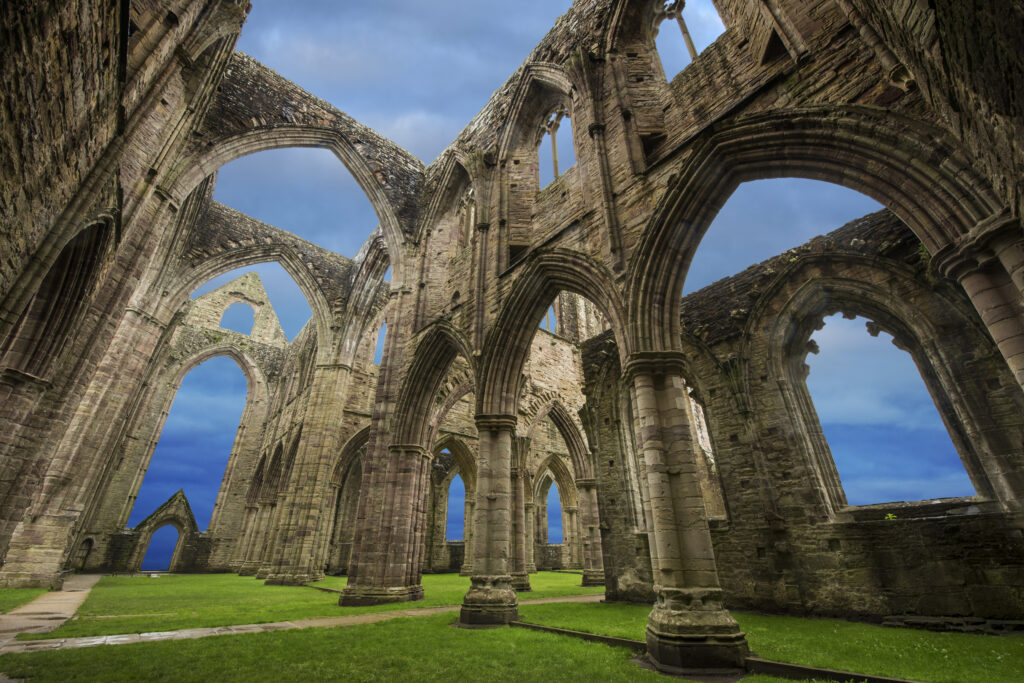
Tintern Abbey, founded in 1131 by Cistercian monks, is a masterpiece of Gothic architecture and is the first Cistercian monastery in Wales and the second oldest in Great Britain. Like many other British monasteries, it was dissolved by Henry VIII in 1536. Since then, the abbey has fallen into disrepair.
Since the end of the 18th century, the majestic ruins have attracted tourists who appreciate romantic and picturesque places, including the poet William Wordsworth. When the painter JMW Turner painted the graceful arches in 1794, they were completely covered with leaves. Today, however, they are carefully protected and can be admired in all their glory.
Tintern Abbey was a place of prosperity and wealth, which was also reflected in the architecture of the abbey. However, little remains of the original buildings from the early 12th century, as the structure was repeatedly altered and expanded over the centuries.
This also suggests that the monastery had considerable financial resources at its disposal. Today, when you walk through the ruins of Tintern Abbey, you see mainly remains from the late 13th century, an era that can probably be considered the abbey’s heyday.
Swansea

Swansea is located in South Wales and is called Abertawe in Welsh. A little further west is the island of Gower. After Cardiff, Swansea is the second largest city in Wales.
Swansea is surrounded by greenery on the Welsh Channel coast. The name dates back to the Viking era, when they carried out their raids. Sven’s island is the origin of the name and refers to the raids on the coast of South Wales. In Welsh, the river Tawe also plays a role and is included in the name.
As early as the 18th century, this well-located town developed into a center of heavy industry. The nearby town of Port Talbot is home to the largest steelworks in Europe. Glass architecture used to be at home here too. Swansea was widely known for its stained glass production. Today, there are many Welsh-speaking locals here, and visitors to Swansea can study the peculiarities of the Welsh language.
The cityscape is characterized by many students who are expanding their knowledge at the Singleton Park campus. Accordingly, Swansea is also home to a youthful lifestyle. Today, students are establishing Swansea’s reputation as a pioneer city for computer-aided design.
Young visitors will certainly not be bored in Swansea. Swansea is characterized by a marina, which, along with the long sandy beaches, makes Swansea a tourist center. Water sports enthusiasts love Swansea Bay as a water sports area.
Caernarfon

Caernarfon Castle in North Wales is probably the most impressive of the Welsh castles. They all have a fascinating air of tragedy about them: although they are located in Wales, they never served the Welsh people to defend their own country. Instead, the English used them as a bulwark against the Celts, who had retreated here to the far west of Britain. For centuries, the Welsh put up brave resistance against the Norman conquerors.
Then, in the 13th century, King Edward I launched an offensive, striking directly at the heart of the Celtic retreat: he had three so-called “zwingburgen” (fortified castles) built directly on the English-Welsh border, the most important of which is located in Conwy in the north, and expanded his power in Gwynedd, in the north of Wales, with further castles inland. This is how Caernarfon Castle, Harlech Castle, and Beaumaris Castle on Anglesey came into being. Edward I thus finally succeeded in subjugating rebellious Wales.
He then chose Caernarfon Castle as his seat of power in Gwynedd. It was built in several stages between 1282 and 1327 and still offers an impressive sight today when approaching through the old town of Caernarfon. However, the castle only reveals its full effect when approaching Caernarfon from the water. This mighty stone bastion towers directly above the harbor and still looks as proud today as it did almost 800 years ago.
Betws-y-Coed

Betws-y-Coed in North Wales is the ideal starting point for visitors who want to explore some of the country’s most beautiful and breathtaking landscapes. Located in Snowdonia National Park, the resort was built mainly during the Victorian era to give visitors access to the beautiful countryside and nearby natural wonders. With forests, mountains, waterfalls, lakes, rivers, and old bridges, Betws-y-Coed is the ideal destination for an outdoor vacation.
Near the village is Swallow Falls, one of the most picturesque natural wonders in North Wales, where the River Llugwy plunges over steep rocks into its deep gorge. Betws-y-Coed is also the starting point for the Marin Trail for mountain bikers and a path to Llyn Elsi, where visitors can enjoy spectacular views.
Caerphilly
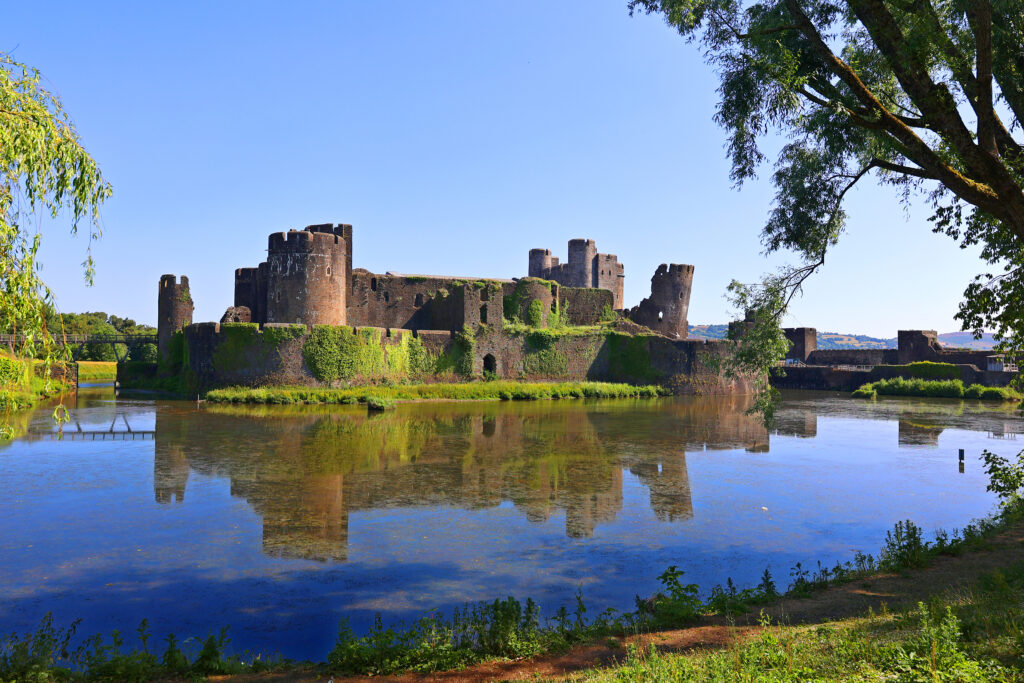
Caerphilly Castle is located in the south of Wales and was built as a so-called ring castle. The castle was built between 1268 and 1271 by Gilbert de Clare, who was considered the 3rd Earl of Cloucester.
The reason for its construction was a dispute with the Prince of Wales, Llywelyn ap Gruffydd. Gilbert de Clare wanted to protect himself from military sanctions by building the castle. The castle complex is the largest in Wales and the second largest of its kind in Europe. The castle is currently in excellent condition, thanks to renovation work carried out in 1950.
The main features of Caerphilly Castle are the artificial lakes that were created around the castle. They were strategically built to prevent enemies from digging tunnels to get inside the castle. The artificial lakes were also created to reduce the attackers’ target area. The southeast tower of the castle, which is considered a consequence of the English Civil War, is also striking.
The tower is 20 meters high and leans three meters to one side. This phenomenon can be attributed to the parliamentary forces that bombarded the castle in 1648, causing the ground to sink. Although the castle was repaired repeatedly, the complex fell into disrepair. The gatehouse on the east side, which was formerly used as a prison, was particularly affected.
Blaenavon
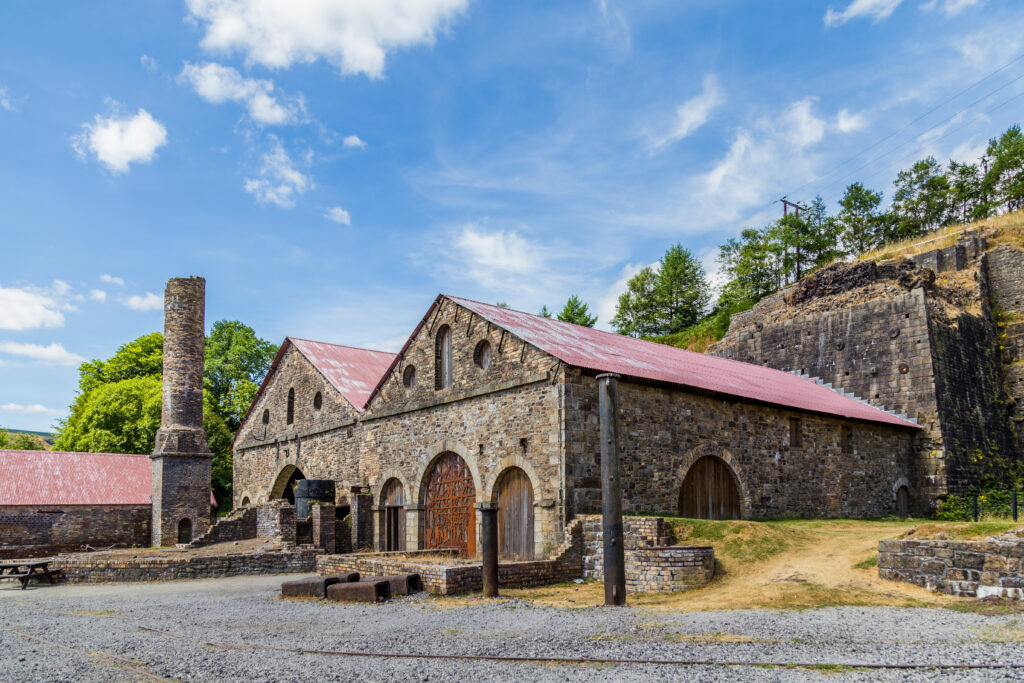
Blaenavon used to depend largely on the coal industry, and the global economic crisis of the 1920s and 1930s, as well as a sustained decline in production after the war, had a devastating effect on the town. Today, however, after the town was recognized as a UNESCO World Heritage Site at the turn of the millennium, the tide has turned completely.
The main attractions today are the 18th-century smelting furnaces of the former ironworks and the Big Pit National Coal Museum just outside the town. The landscape, once dominated by mines, coal pits, and railway lines, has been completely regenerated and now boasts a rich variety of flora and fauna.
Various hiking and cycling trails take you through nature and past industrial monuments, or you can enjoy a ride on the Pontypool & Blaenavon Railway.
Pembroke Castle
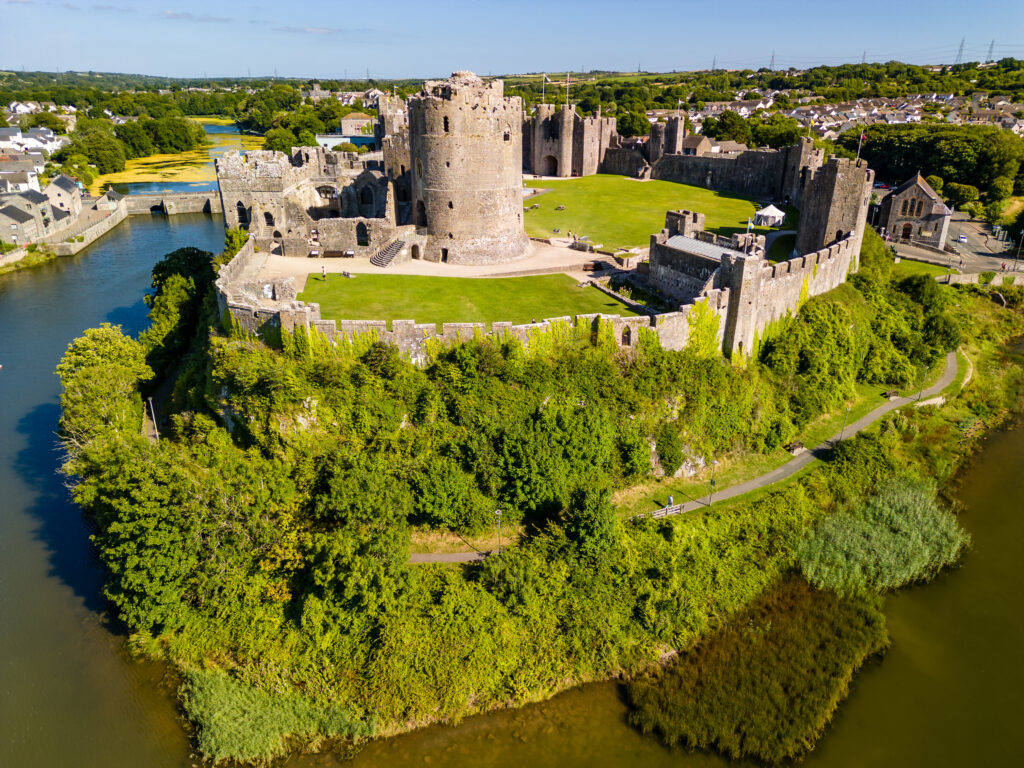
Pembroke Castle, built in 1093 by the Norman Roger de Montgommery, is located in Pembrokeshire near Pembroke. Surrounded by water on three sides, it was well protected. Although it was partly built of wood, it withstood two sieges by the Welsh.
About 100 years later, William Marshall, Earl of Pembroke, built the massive main tower, over 22 meters high, with its stone dome, turning the castle into a strong stone fortress.
At the beginning of the 12th century, the town of Pembroke was built by King Henry II and surrounded by a town wall. In 1172, Henry II and Richard de Clare embarked here to conquer Ireland. Henry Tudor, later Henry VII, was also born in the castle. He spent some of his childhood there, but never returned as king.
During the Civil War, Royalists and Cromwell’s troops alternately occupied the castle, but it was not until 1648, after a heavy attack on the town, that the castle was surrendered to him. Unfortunately, it was then partially destroyed by him, and the rest was destroyed by the townspeople, who stole the stones.
At the end of the 19th century, repair work began, which was intensified by the owner from 1929 onwards. Below the castle is Wogan’s Cavern, a large cave that was already used by humans in the Stone Age. A staircase was built to connect it to the castle.
Castell Coch
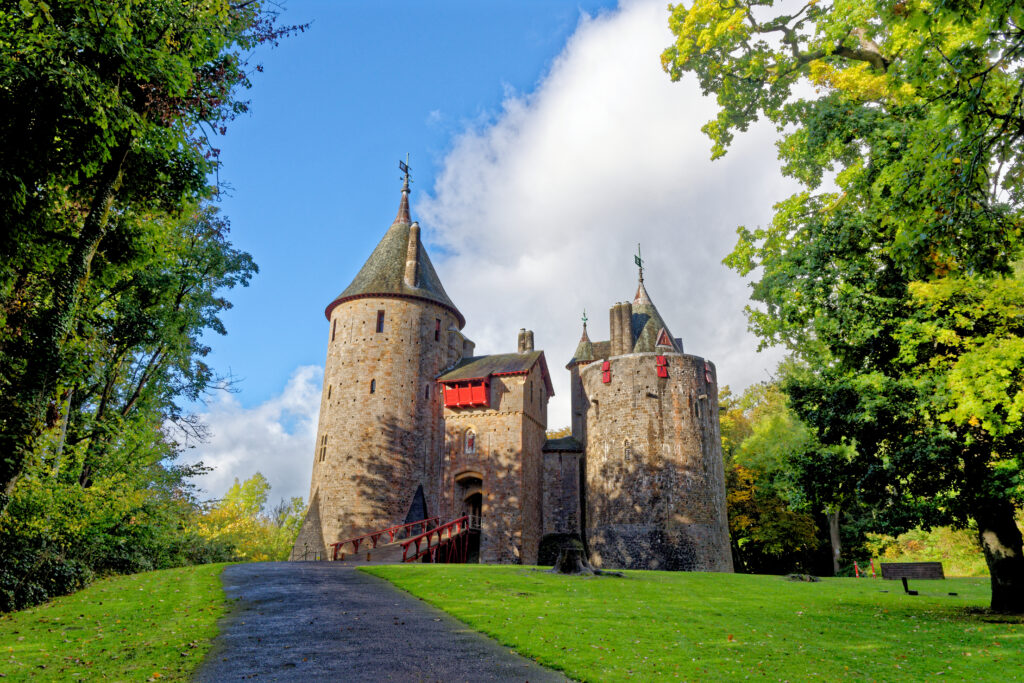
The early history of Castell Coch, or Red Castle in Welsh, is not entirely certain. Originally, a motte was built in the 11th century by Norman conquerors to secure strategic control over the Taff Valley. However, it was soon abandoned when the area fell back under Welsh rule.
Gilbert de Clare, Lord of Glamorgan, occupied the land in 1267 and used the motte as the basis for a new castle. It was built with three round towers and a curtain wall with only a small inner courtyard. This first fortress was destroyed in the 13th century when Llywelyn ap Gruffudd, the last Prince of Wales, fought against English rule. During the Battle of Bannockburn in 1314, it was captured and destroyed by Welsh rebels. After that, it fell into complete disrepair.
In the 19th century, Castell Coch was rebuilt as a romanticized castle. John Crichton-Stuart, the third Marquess of Bute, commissioned architect William Burges to transform the ruins into a medieval-inspired fantasy castle. Reconstruction began in 1875, using the preserved foundations and walls of the original structure. The interiors are richly decorated and adorned with medieval motifs, incorporating modern Victorian-era luxuries.
Castell Coch was never intended for military purposes, but served as a retreat and expression of the romanticized notion of the Middle Ages.
Portmeirion
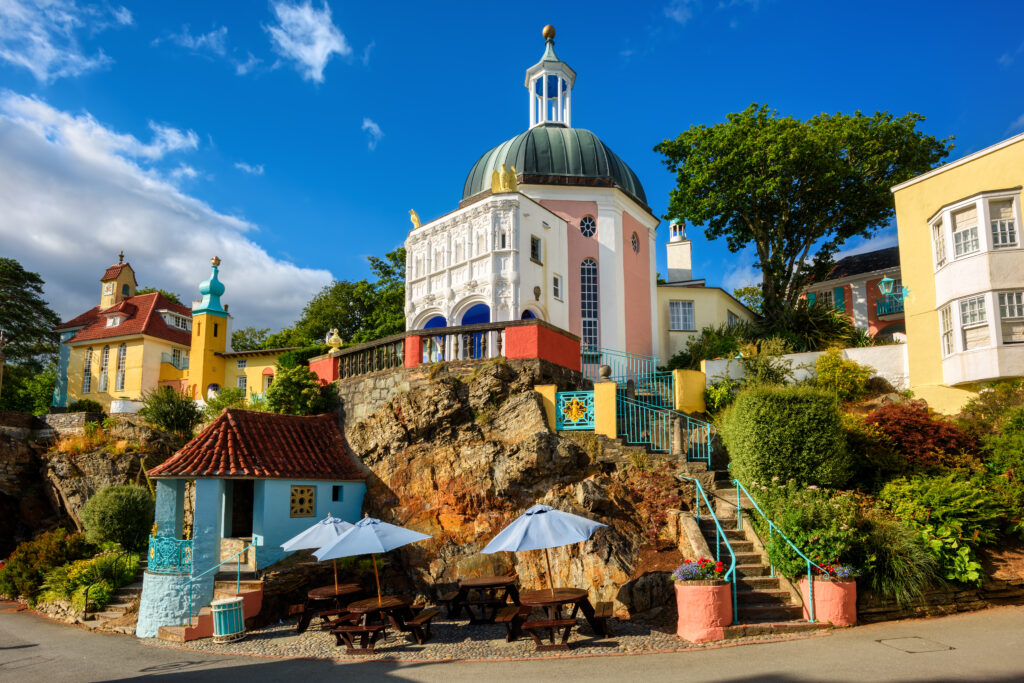
When you come to Portmeirion on your trip through Wales, you can hardly believe your eyes: colorful, Mediterranean-inspired houses nestle against the hills above Porthmadog Bay. The village looks like a colorful jumble, playful and at the same time extremely aesthetic.
There is beauty everywhere you look, and a walk through Portmeirion is like recharging your batteries. But how can this be: a place that looks like something out of a Mediterranean dream sequence, with baroque facades, bold colors, elegantly curved domes, and enchanting walkways in enchanted, blooming gardens—and all this in North Wales?
Behind it all is a true eccentric: Bertram Clough Williams-Ellis. Portmeirion is a fantasy come true, a place built solely for the sake of beauty and the personal pleasure of its creator. He dreamed of creating a nostalgic island for lovers of beauty. Unhappy with the shift towards practicality and functionality, Williams-Ellis wanted to create a place that had no other purpose than beauty itself.
The place, which in its romantic neglect seemed tailor-made for his project, was then still called “Aber Ia,” which means “cold bay” in Welsh. This was certainly not a suitable name for a place for lovers of beauty, so Williams-Ellis decided on Portmeirion. There is something wistful about this name – a sense of longing and homesickness at the same time, vague and open to interpretation by each individual.
Powis Castle
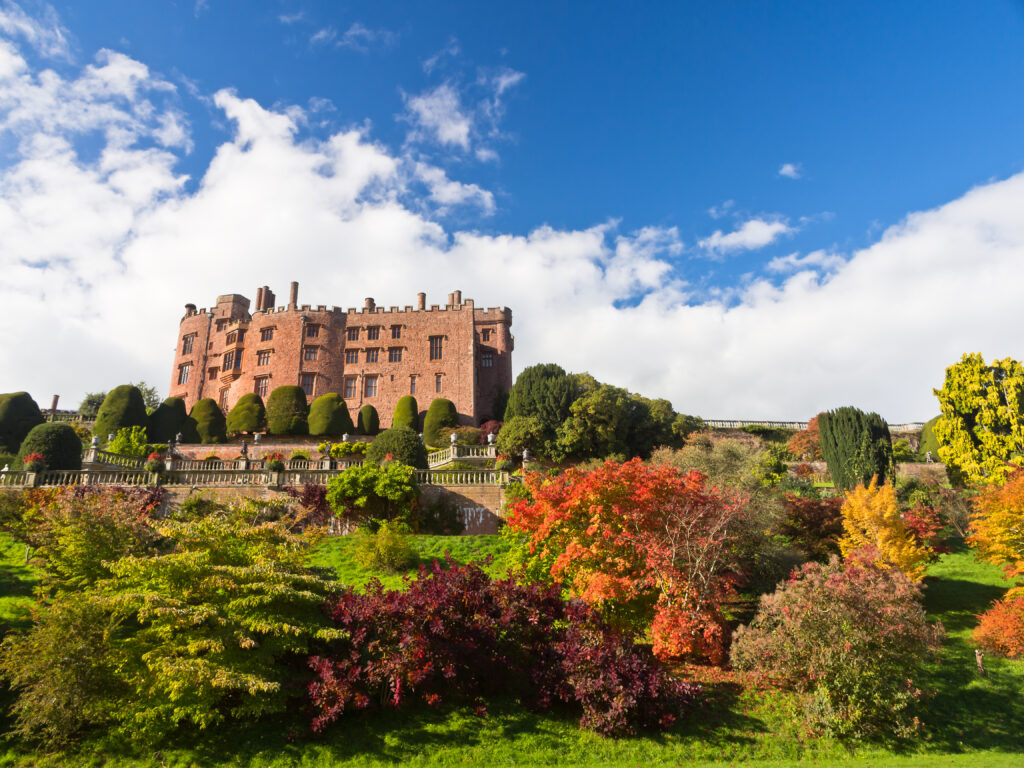
From a medieval fortress to a prestigious and comfortable home – the history of Powis Castle is fascinating and complex. The castle was built around 1200 as a fortress for the Welsh princes of Powys. Despite constant threats from their neighbors Gwynedd and England, they ruled their kingdom independently and successfully.
In 1587, Powis Castle was sold to a Welsh gentleman: Sir Edward Herbert, the second son of the Earl of Pembroke. He created the romantic “Long Gallery,” where today you can admire the wonderful collection of coats of arms belonging to his ancestors.
From the 1660s onwards, the first Marquess of Powis had the rooms completely redesigned. He created the grand staircase and the wonderful Baroque rooms on the first floor, as well as the “State Bedroom.”
He also had the garden terraces laid out, but had to leave the country in 1688 before the work was completed – his loyalty to James I proved to be his undoing.
The marriage of Lady Henrietta Herbert and Edward Clive in 1784 linked Powis and Clive. Edward was the son of Robert Clive, the conqueror of India. His extensive collection of treasures from the Indian subcontinent is now on display at Powis Castle.
At the beginning of the 20th century, the 4th Earl of Powis had the castle rebuilt in the Jacobean style. At the same time, his wife Violet breathed new life into the gardens. It was the era of country house weekends and events at Powis Castle.

